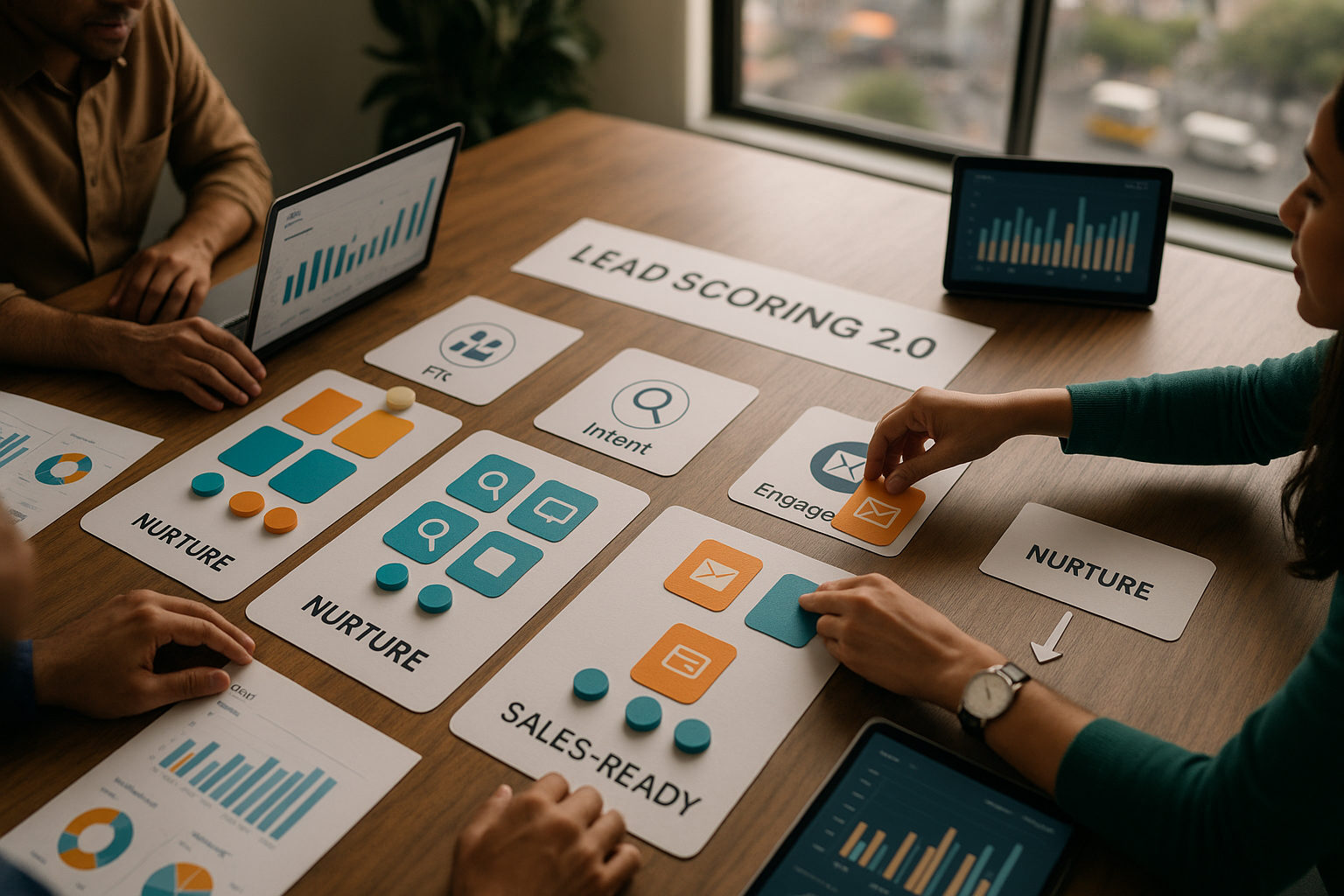Introduction: The Evolution of ABM
B2B lead generation has entered a new era. Traditional demand generation is no longer enough; buyers expect personalized, account-specific engagement. That’s where Account-Based Marketing (ABM) 2.0 comes in.
Unlike traditional ABM that relied on manual targeting and generic personalization, ABM 2.0 leverages AI, automation, and intent data to deliver hyper-targeted campaigns at scale. For B2B marketers in 2025, this evolution is not just an option—it’s a survival strategy.
What Is ABM 2.0?
At its core, Account-Based Marketing (ABM) 2.0 is a strategy that aligns sales and marketing teams to target a carefully chosen set of high-value accounts. But instead of broad outreach, it focuses on:
- Hyper-targeted campaigns tailored to decision-makers.
- Data-driven insights powered by AI and intent data.
- Seamless collaboration between sales and marketing to ensure ABM success.
This shift is crucial because B2B buyers are overwhelmed by generic outreach. They want solutions tailored to their specific business challenges—and ABM 2.0 delivers just that.
Why Hyper-Targeted Campaigns Are the Future
In ABM 2.0, hyper-targeted campaigns are the backbone of success. Gone are the days of one-size-fits-all email blasts. Instead, marketers create customized content journeys for each account.
Examples of hyper-targeted campaigns in ABM 2.0 include:
- Personalized landing pages for key accounts.
- Industry-specific webinars targeted to a handful of decision-makers.
- Account-customized ads that address pain points directly.
The benefit? Higher engagement, shorter sales cycles, and stronger ROI. A recent survey found that ABM-driven hyper-targeted campaigns can deliver up to 3x more pipeline growth compared to traditional outbound efforts.
Coordinating Sales + Marketing for ABM Success
A critical element of ABM success in 2025 is tight alignment between sales and marketing. Without coordination, even the best campaigns fail.
Key strategies for sales-marketing alignment in ABM 2.0 include:
1. Shared KPIs→ Both teams measure pipeline, revenue, and account engagement rather than just leads.
2. Regular Syncs → Weekly ABM standups to align messaging and outreach efforts.
3. Unified Tech Stack → CRMs, marketing automation, and intent data platforms integrated into one workflow.
When sales and marketing teams collaborate on ABM campaigns, the chances of conversion skyrocket because prospects receive consistent, relevant messaging at every touchpoint.
The Role of AI in ABM 2.0
The real game-changer for Account-Based Marketing (ABM) 2.0 is AI. Artificial intelligence transforms ABM from a manual, resource-heavy approach into a scalable and precise system.
How AI fuels ABM success:
- Predictive Analytics: AI forecasts which accounts are most likely to convert.
- Content Personalization: AI tools generate account-specific messaging at scale.
- Real-Time Optimization: AI algorithms adjust campaigns instantly based on engagement.
For example, AI can analyze buyer signals—such as website visits, content downloads, or LinkedIn activity—to determine if an account is “in-market.” This ensures your hyper-targeted campaigns hit prospects at the perfect moment.
Intent Data: The Secret Weapon of ABM 2.0
If AI is the engine, intent data is the fuel of ABM 2.0. Intent data reveals what potential buyers are researching online, which topics they’re engaging with, and when they’re showing signs of purchase intent.
With intent data in ABM strategies, marketers can:
- Identify which accounts are actively exploring solutions.
- Prioritize outreach based on readiness to buy.
- Deliver personalized messages that align with their exact stage in the journey.
For instance, if a target account suddenly starts researching “cloud data migration,” your ABM campaign can respond with a whitepaper, case study, or webinar invite on that exact topic. That’s how intent data in ABM converts interest into pipeline.
Measurement: Proving ABM Success
The beauty of Account-Based Marketing (ABM) 2.0 is that it allows clear measurement of success. Instead of focusing on vanity metrics like clicks or impressions, marketers track:
- Account engagement scores → How deeply key accounts interact with your content.
- Pipeline growth → How much revenue potential is created from ABM campaigns.
- Closed-won deals → The ultimate proof of ABM success.
AI and intent data platforms now provide dashboard-level visibility into these metrics, making it easier than ever to justify ABM investments to leadership.
Action Plan for ABM 2.0 in 2025
If you’re ready to implement Account-Based Marketing (ABM) 2.0, here’s a roadmap:
1. Define Your Target Accounts → Choose high-value accounts using firmographics, technographics, and intent signals.
2. Align Sales + Marketing Teams → Create shared KPIs and coordinate outreach.
3. Deploy AI Tools → Leverage predictive analytics for account prioritization.
4. Activate Intent Data → Fuel your hyper-targeted campaigns with buyer intent signals.
5. Measure ABM Success → Track engagement, pipeline, and revenue impact consistently.
Conclusion: The Future of ABM Is Intelligent
Account-Based Marketing (ABM) 2.0 is not just an upgrade—it’s a revolution. By combining AI-driven insights, hyper-targeted campaigns, and intent data in ABM, businesses can achieve unprecedented ABM success in 2025.
In this new era of B2B lead generation, the companies that embrace ABM 2.0 will close bigger deals faster, while those clinging to old methods will be left behind.
The message is clear: AI + Intent Data = ABM Success.
ABM 2.0 is account-based marketing enhanced with AI and intent data to run hyper-targeted campaigns, align sales and marketing, and accelerate B2B pipeline and revenue.
AI predicts and prioritizes in-market accounts while intent data shows what buyers are researching, enabling precise timing, personalized messaging, and higher conversion.
Examples include account-specific landing pages, industry micro-webinars for key stakeholders, tailored ads by use case, and 1:1 email sequences mapped to buying stages.
Typical stacks include a CRM, marketing automation platform, intent data provider, enrichment/CDP, account-targeted ad platforms, and analytics dashboards.



